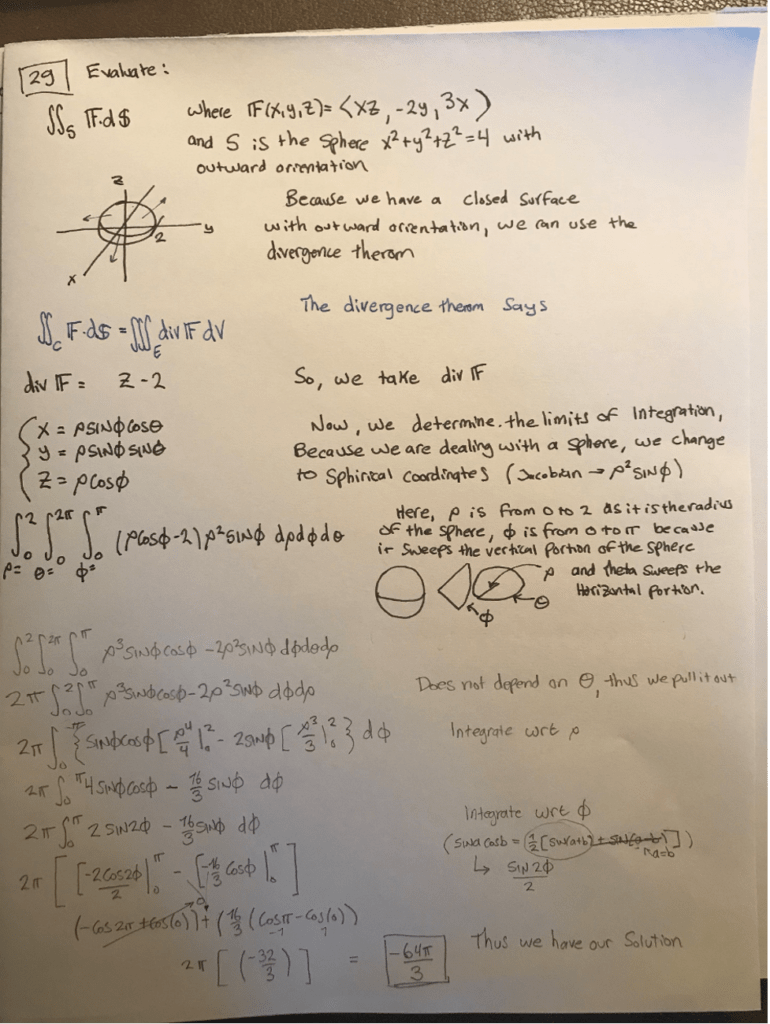Productive Note Taking in Complex Classes
Background:
My name is Colin, I am going on senior year at IU pursuing a double major in Physics and Computer Science with a minor in Mathematics. After some hard lessons my freshman year, I have maintained four semesters of straight-A’s. The opportunity to write about some of the things I feel make a successful student has been given to me, and I have shared some some of my thoughts around one such activity that is critical for a student’s success – productive note taking – below…
 My Sophomore Year I took Calculus IV, the last class in the series of Calculus classes at IU Bloomington. My professor met us with some strict rules: Do not show up late to class, no cell phone use in class (both would result in 5% off our final grades), and homework is optional. There was no extra credit for the homework, we could turn it in and receive a grade which did not help our final grades at all—other than the extra practice for exams. The biggest take away from this was how he insisted that the format of all homework and exams should be similar to an English paper.
My Sophomore Year I took Calculus IV, the last class in the series of Calculus classes at IU Bloomington. My professor met us with some strict rules: Do not show up late to class, no cell phone use in class (both would result in 5% off our final grades), and homework is optional. There was no extra credit for the homework, we could turn it in and receive a grade which did not help our final grades at all—other than the extra practice for exams. The biggest take away from this was how he insisted that the format of all homework and exams should be similar to an English paper.
I would not find it so far fetched that a high school or even college student would be used to completing equations and going through algebra on homework or exams without a single complete sentence. In this Calc IV class however, such formatting would fail you the class.
The Format:
Equations on the left, explanations (in English!) on the right. I will share a problem from one of my Calc IV exams. (See Figure 001) Notice I declare each step taken on the left side of the paper with some explanation on the right side. This process not only demonstrates your understanding to the grader, it also internalizes the process of tackling similar problems while increasing your confidence in the material and bolstering your ability to communicate the subject in general.

 (Aside:) I had a conversation with my quantum professor last semester about a problem that seemed like a trick question to me, he argued that the question’s purpose was to encourage me, the student, to take confidence in the material I had learned and notice that the question had no answer. When I implemented the note taking method I am discussing in this post, I found confidence in the material for the many problems this professor had that tested the depth of my understanding.
(Aside:) I had a conversation with my quantum professor last semester about a problem that seemed like a trick question to me, he argued that the question’s purpose was to encourage me, the student, to take confidence in the material I had learned and notice that the question had no answer. When I implemented the note taking method I am discussing in this post, I found confidence in the material for the many problems this professor had that tested the depth of my understanding.
Apply this method to note taking:
My professor only expected us to turn our homework and exams in using the pictured format. I have since applied this format to all my classes.
In a physics class, the instructor will discuss governing equations and provide reasoning as to how we arrived at these equations.
In Figure 002, I have shown my current adaptation of this method in the form of an example problem in vector calculus. I use grid notebook paper in all of my classes, to define a vertical line separating the material (be it anything form vocabulary, to equations, to computer code) on the left and my comments/explanations on the right. In class the right side will also contain paraphrased dialogue from the instructor.

Call to Action:
Only you can determine what the best method of study is for you. To decide if this method is comfortable for you, try solving a problem this way. Reference your notes. Write down what you referenced in your explanations. Do an entire homework this way and see how much more information you retain, and how you will stand out to your instructor. Make this a habit and notice what happens to your grades.
Thank you for reading.





